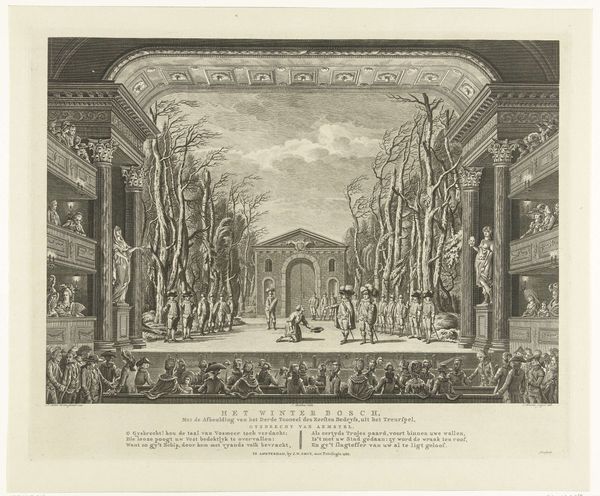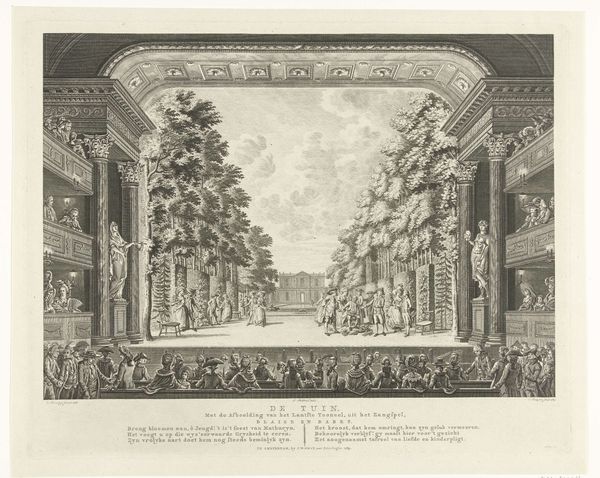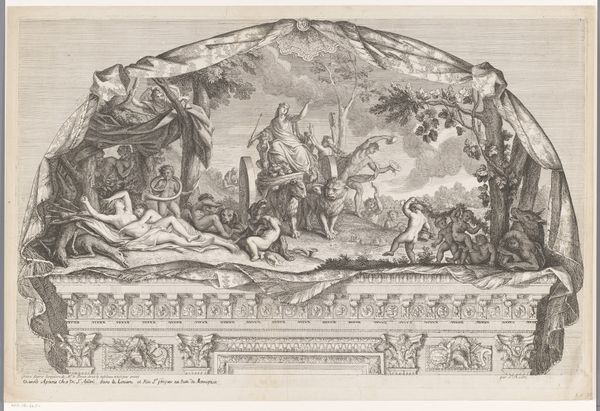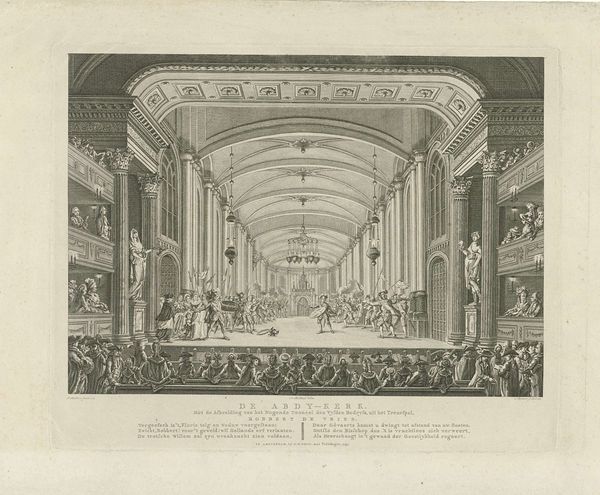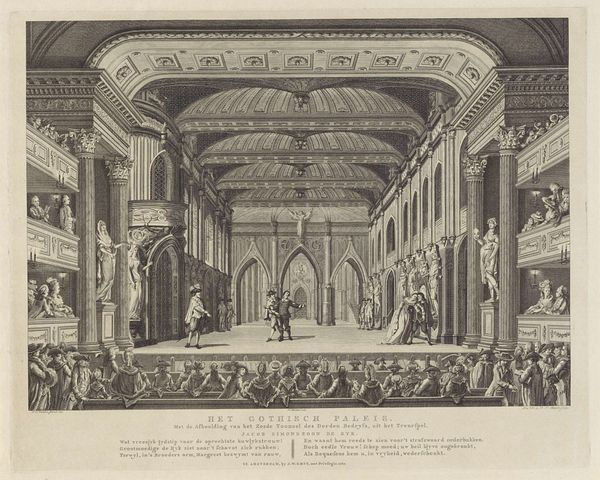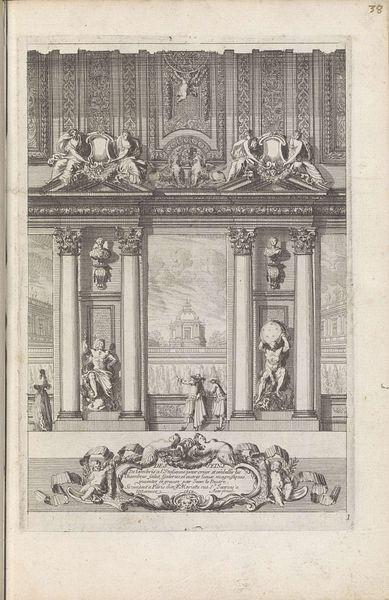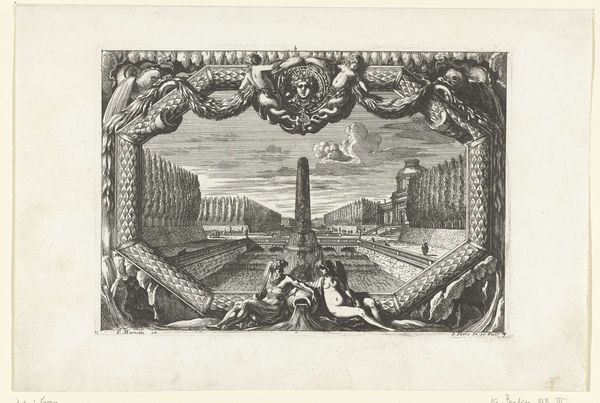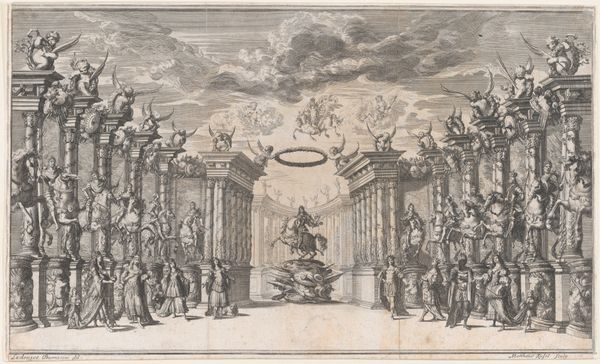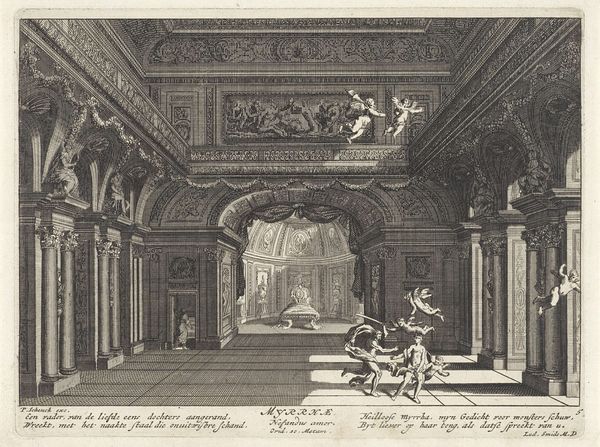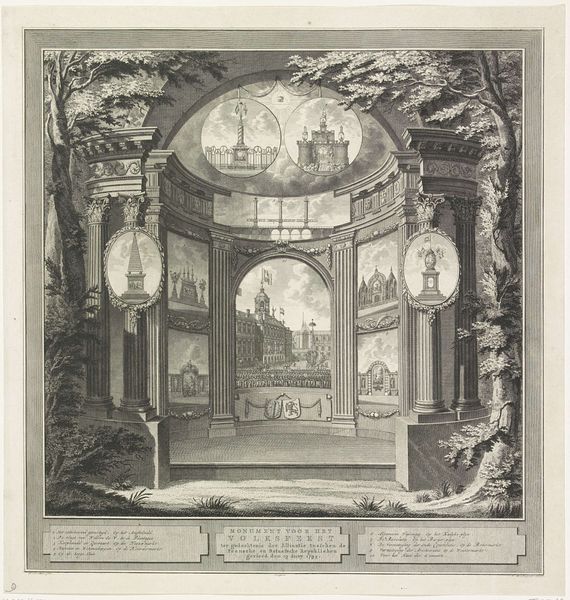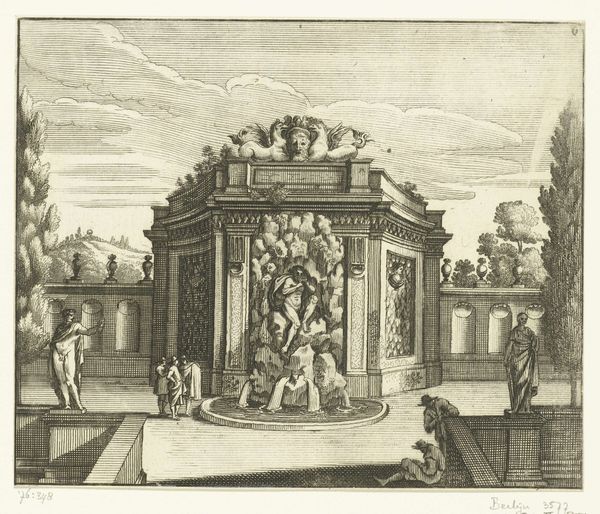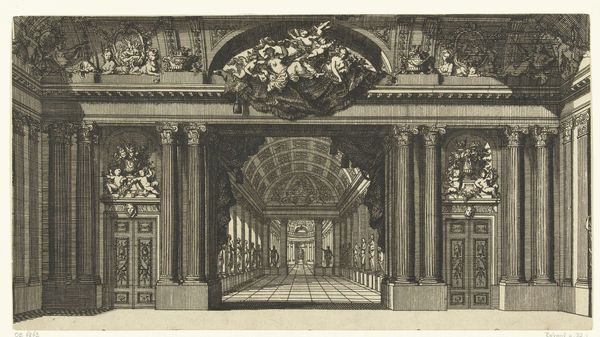
Dimensions: height 333 mm, width 418 mm
Copyright: Rijks Museum: Open Domain
Curator: The artwork before us, “Schouwburg met toneeldecor: Het Bosch,” created in 1788 by Izaak Jansz. de Wit, presents a theatrical stage set, a baroque vision rendered in exquisite engraving. It's part of the Rijksmuseum's collection. What strikes you first? Editor: The stark contrast between the opulence of the theatre’s architecture and the wildness of the stage backdrop. It speaks volumes about how nature was viewed, as a spectacle to be contained, framed, and consumed by an elite audience. It also brings to mind questions of access. Who *is* the audience for this “nature”? Curator: Precisely. Consider the imagery; we have this meticulously rendered artificial wilderness – “Het Bosch,” meaning “The Woods” – as the backdrop, presented as an escape, or perhaps as a symbol of something the audience lacks in their urban existence. Look at the people on the stage. Do they reflect or challenge power dynamics of the time? Editor: They certainly don't subvert them, at least not overtly. The finely dressed figures interacting within the staged woodland present a pastoral fantasy, almost certainly sanitised and romanticised for a privileged gaze. This reflects the colonial underpinnings that shaped notions of the natural world and the role of humans within that landscape. There are subtle references here if one digs beneath the surface about land ownership and human interference. It reminds me how theatrical performances could perpetuate specific ideals or sometimes disrupt dominant social and political perspectives of the period. What purpose could it serve? Curator: Perhaps it was didactic, meant to remind viewers of a perceived simpler time. Symbols abounded in such works. Trees could signify strength and stability. The forest, danger and temptation. It offered an accessible visual shorthand for contemporary audiences, speaking directly to pre-existing values. Editor: Yes, and within that artifice lies an interesting tension. Were they truly fooled into imagining nature could or should look as they stage-managed it to look? And at what expense? It alludes to a complex discourse on the perceived 'naturalness' of landscapes that endures today, influencing our relationships with place, community and each other. The constructed idyllic sets up this whole narrative that the landscape is just for entertainment instead of something to be honored and protected. Curator: Indeed. The symbolic layers intermingle and ask to challenge us. This isn't just a picture; it's a historical artifact prompting ongoing analysis. Editor: Well said, I can appreciate it more having discussed the social nuances.
Comments
No comments
Be the first to comment and join the conversation on the ultimate creative platform.
